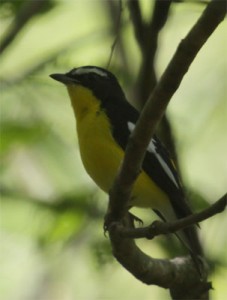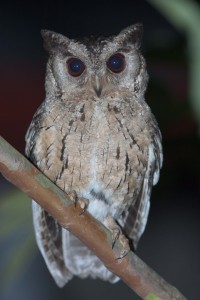Koels in song
The Asian Koels (Eudynamys scolopaceus) in my home area are still singing. They started singing in February and still continuing it. Males start to sing well before dawn and going on with it almost throughout early part of morning, and then sing on and off during the day time. Then frequency of singing increases again by evening.
They were singing frequently almost throughout the day time during last few months, and in that time they were also singing in some nights. There are about five males are singing and several females are calling within the area which I can hear.
 Asian Koel, male. Photo by Uditha Hettige.
Asian Koel, male. Photo by Uditha Hettige.
I still did not notice the Jungle or Large-billed Crows (Corvus macrorhynchos) are attempting to nest in this area. But, about just quarter of a kilometre away along the Highlevel road there are few pairs of House Crows (Corvus splendens) started to build nests on electric and telephone posts. However, I wonder whether the females in my home area will ever get a chance to lay eggs in these House Crow nests as there are already other koels are singing in the vicinity of these nests.
Besides the males’ very distinct and familiar song they also sing another type of song time to time, of which the purpose appears to be also for advertising their presence to the females.
The familiar song of the males featured below was recorded on 03rd May 2012 in my home garden. It is the sound which connects the koha (the Koel) with the Sinhala Awrudu (the Sinhala New Year) in April.
The other song of the males featured below was recorded on 12th May 2012 in my home garden. In this recording other koels in the area are also heard, including the call of the females described below.
Females have a very different vocalization in contrast to the songs of the males. Males also utter the same call on and off, and it is the only vocalization heard from both sexes during non-breeding season when the males do not sing.
 Asian Koel, female. Photo by Uditha Hettige.
Asian Koel, female. Photo by Uditha Hettige.
Call of female featured below was recorded on 03rd May 2012 in my home garden.
Deepal Warakagoda, 15 May 2012.

 Male Yellow-rumped Flycatcher (Ficedula zathogygia), a photo taken by Uditha Hettige at the same location some days ago I saw it.
Male Yellow-rumped Flycatcher (Ficedula zathogygia), a photo taken by Uditha Hettige at the same location some days ago I saw it.
